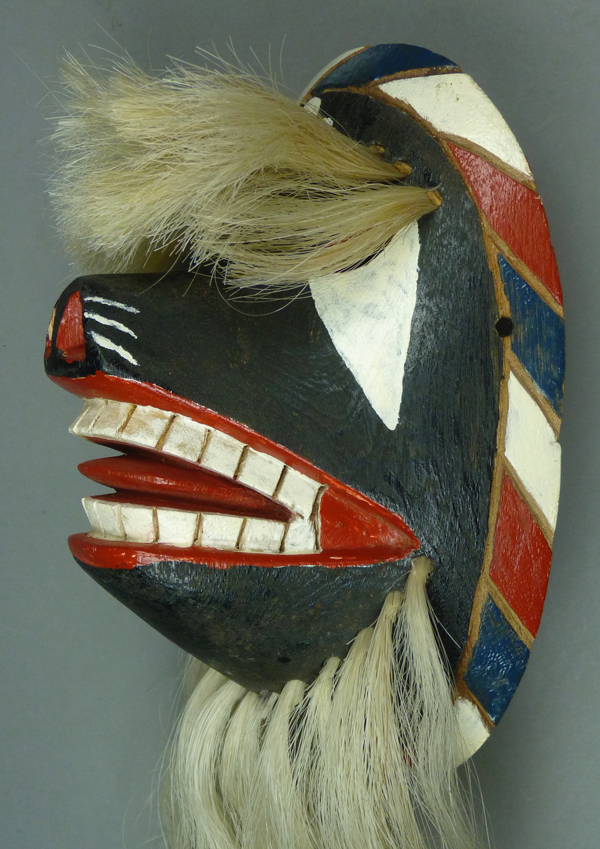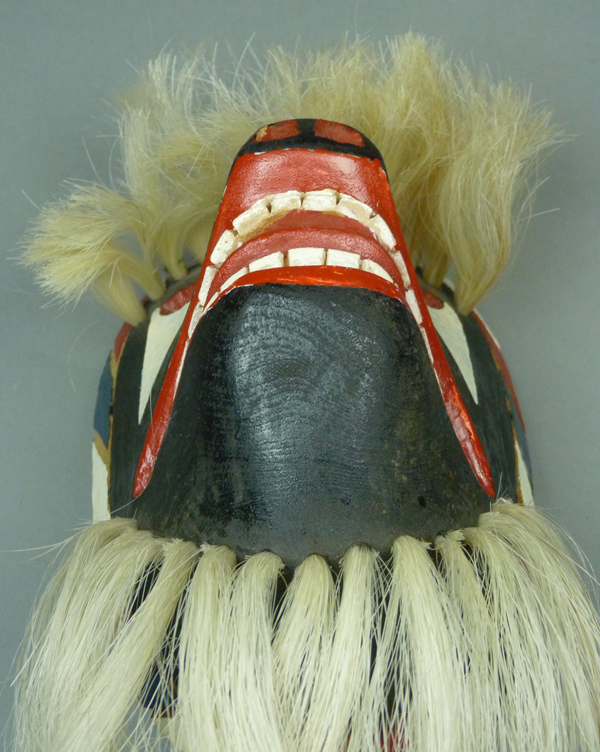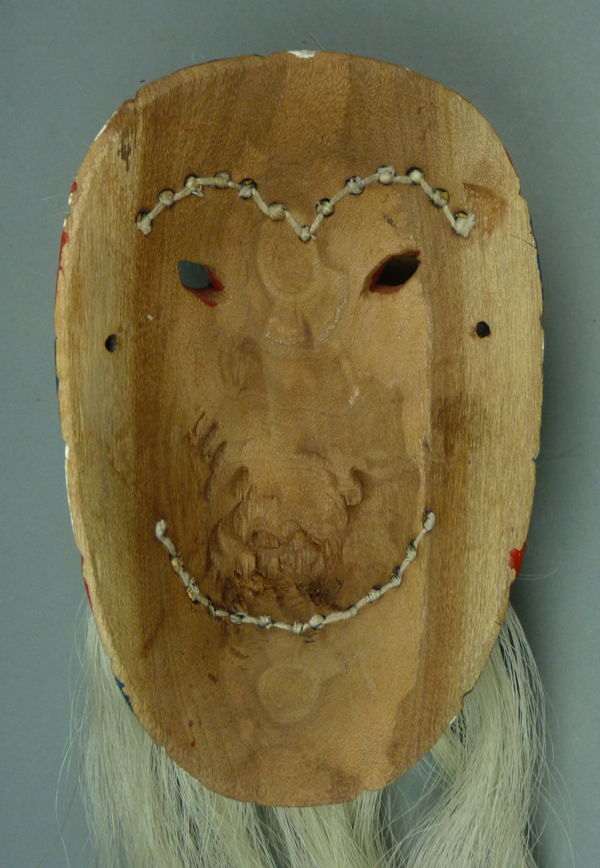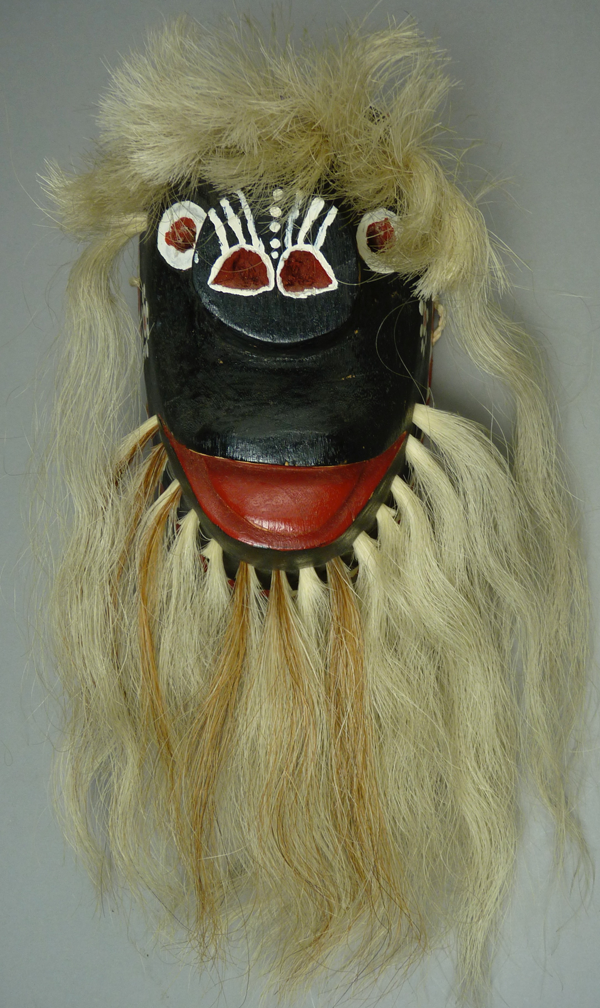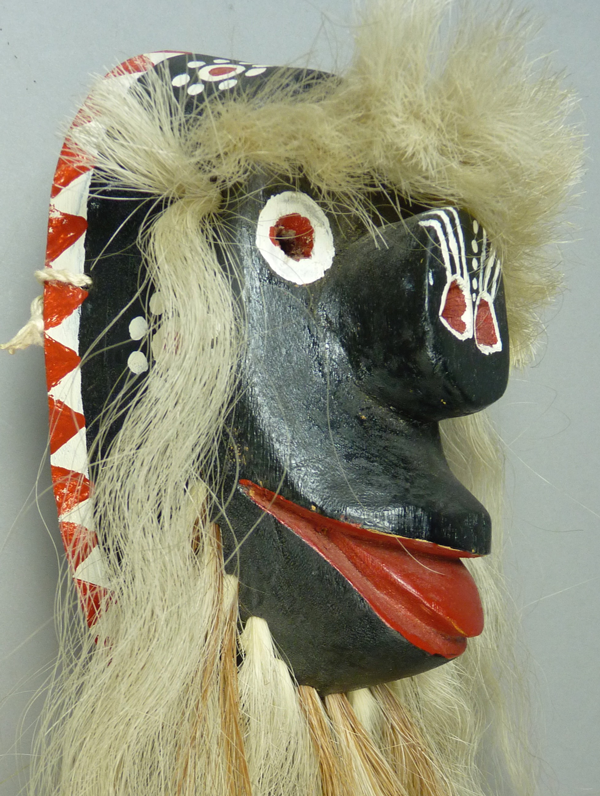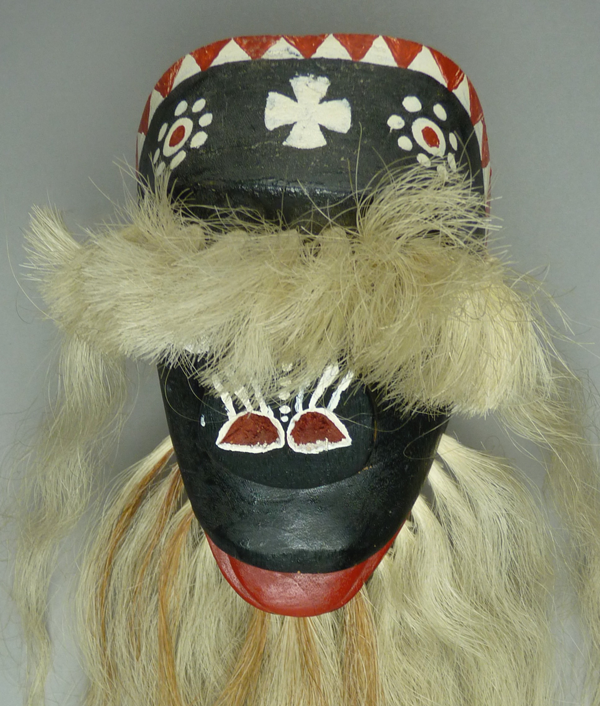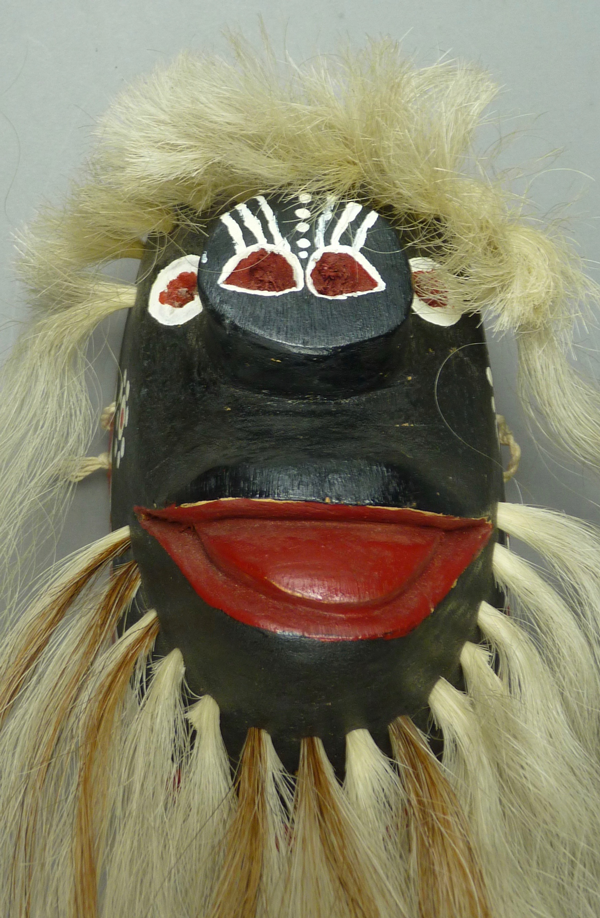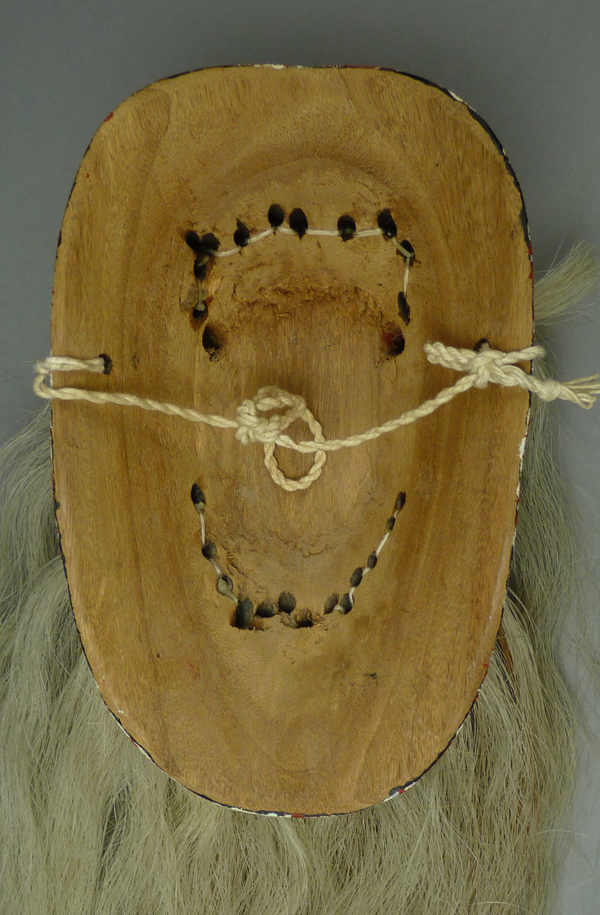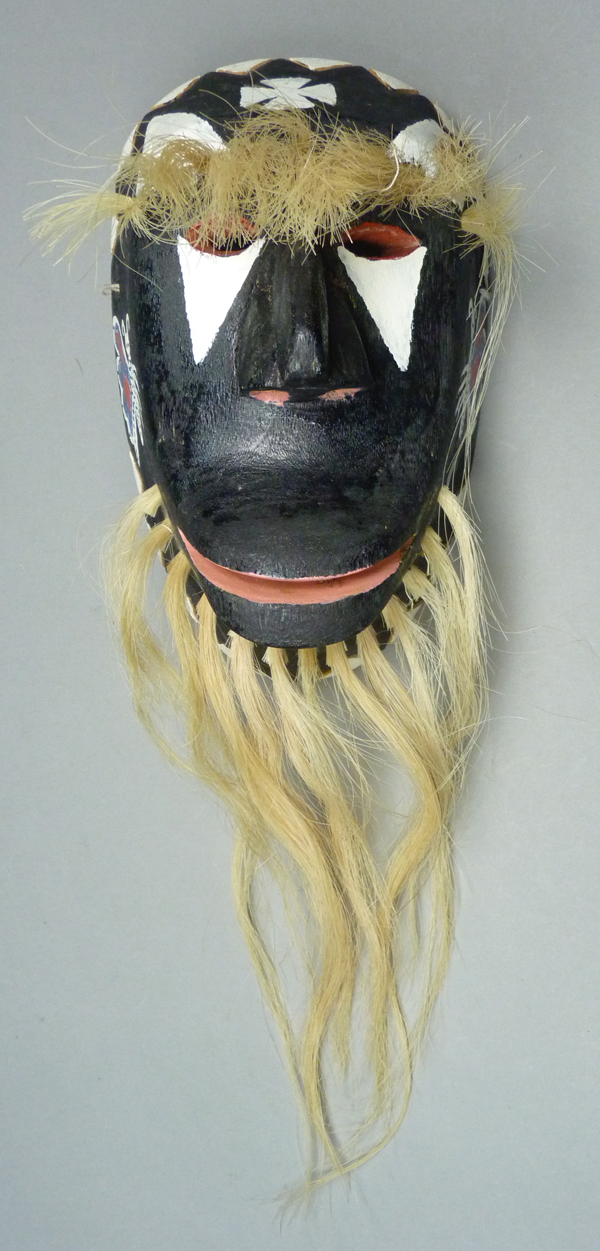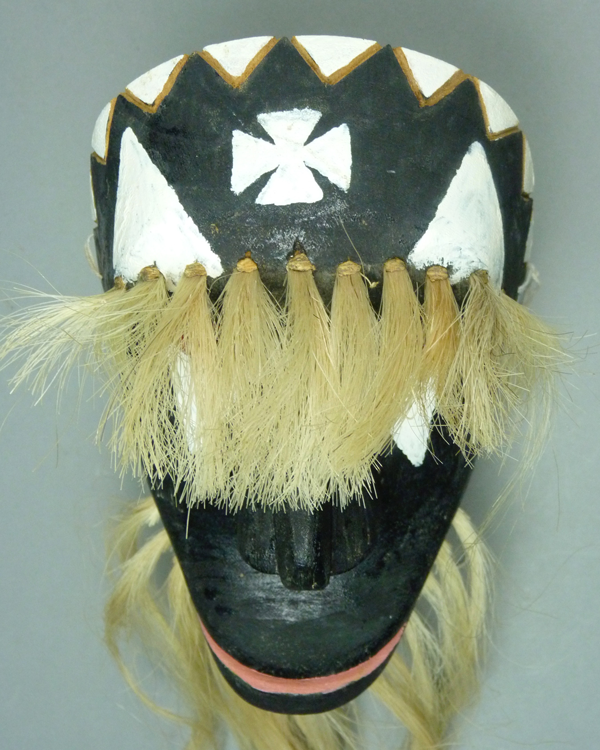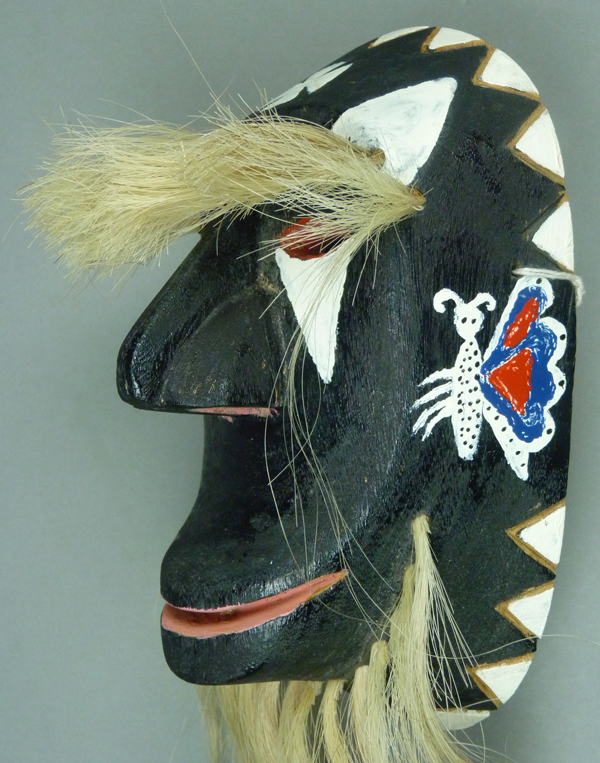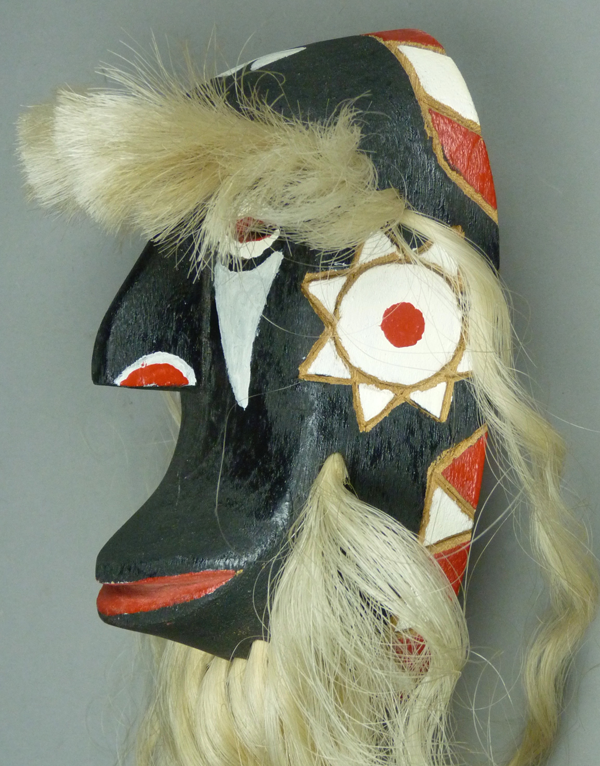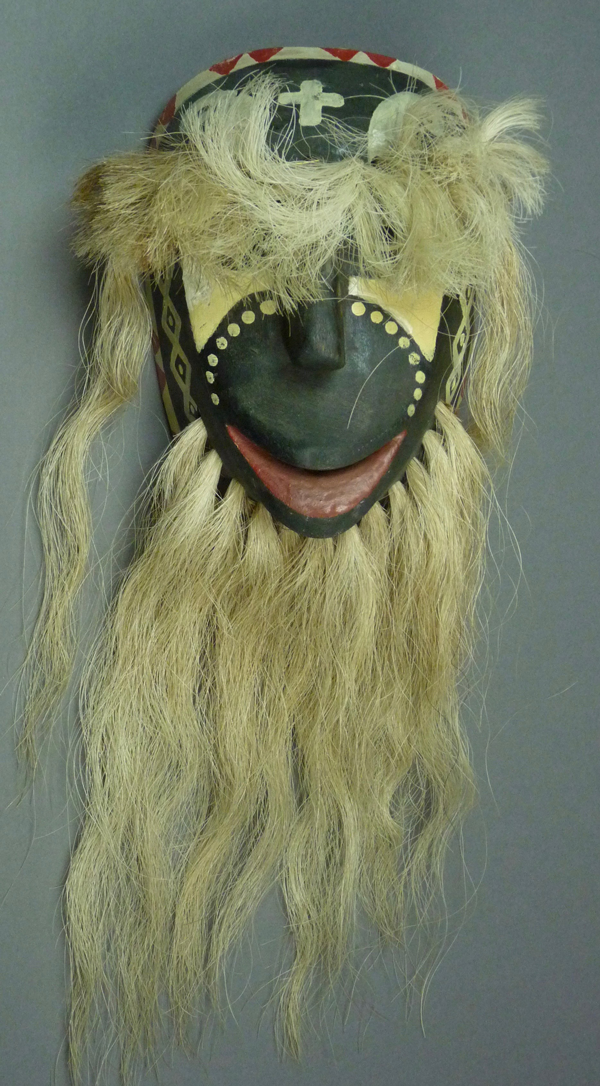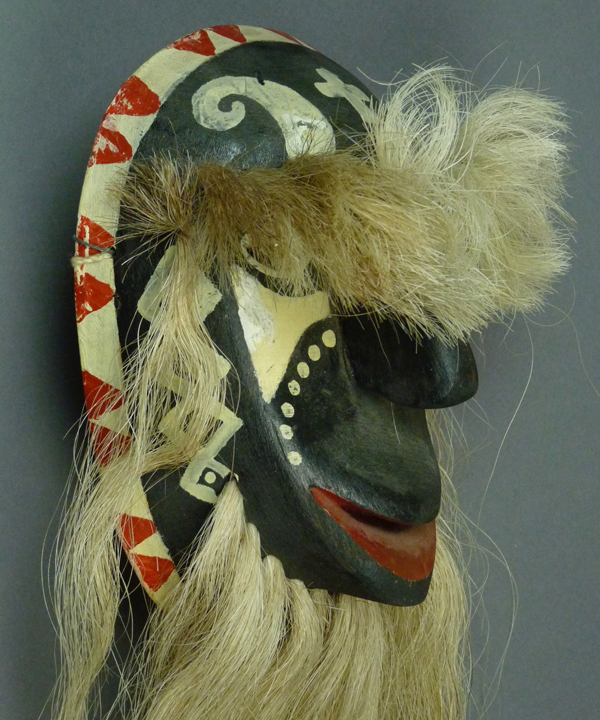This series of posts about Yoeme (Yaqui) Pascola masks began on July 4, 2016.
In this final post about the masks of Antonio Bacasewa of Vicam, in the Mexican state of Sonora, I will show some of his charming made for sale or use masks of apes and pigs. I find him so clever and inventive. I will begin with a mask that might represent a pig or some other animal, to set the stage for the brilliant and undeniable pig mask that follows. This mask was collected by Tom Kolaz in the early 1980s from a dancer in Barrio Libre, Tucson.
Here is a pig-like critter, although one might argue that it could represent a dog.
This mask is well carved and it has lots of “personality.”
It looks most like a pig from this angle.
This mask is 8 inches tall, 5 inches wide, and 4 inches deep.
It has the same well carved back that one sees on all of Antonio’s masks, and has very mild staining from use.
The next mask, on the other hand, presents a humorous caricature of a pig. This is the only example of this type that I have ever seen. It was collected by Tom Kolaz in the early 1980s from a dancer in Barrio Libre, Tucson.
It is better appreciated from the side view.
Apart from the stylized pig’s nose, this mask is similar to Antonio’s other masks, such as those that follow in today’s post. One way to think about Antonio’s masks is to compare them to the Mr. Potato Head™ children’s toy, with a set of features that can be applied to a standardized armature.
The forehead cross and the dotted designs are found on many of Antonio’s masks.
But I can’t say the same thing about this barrel nose.
This mask is 8 inches tall, 4¾ inches wide, and 3½ inches deep.
This pig does appears to have been danced, because one does see differential staining, although this is mild.
Now let us look at some masks that appear to represent monkeys or apes. Like some other masks by Antonio, it is not always easy to assign them to a particular animal species. However the first of these has this combination of a humanoid nose and painted ears, to argue against the obvious other contenders, such as human faced or canine. I purchased this mask from a private collection in Tucson in 2003; apparently it had been imported from Sonora by Barney Burns in the 1980s. It may have been lightly danced.
At first glance the nose seems that of a human, but look at these ears. On the other hand, does a dog ever have a nose like this? In any event, isn’t this a charming mask? In passing, this brow view provides yet another excellent demonstration of the wooden pegs used by Antonio to spread the hair.
I like the abstract quality of this mask—looking at the nose, the mouth, and the line of the cheek. I particularly like the painted butterflies on the sides.
This mask is 8 inches tall, 5 inches wide, and 3½ inches deep.
In contrast the next very similar mask lacks those painted ears, adding to the ambiguity. I bought this mask from Mark Bahti in 2012.
There are sun designs painted on the cheeks.
I am going to call it an Ape mask, despite the ambiguity.
This mask is 7½ inches tall, 4½ inches wide, and 3½ inches deep.
As usual, the backs of these apes are of no assistance in identifying the animal. It does appear to have been mildly danced. The inscription states—”Antonio Bacasewa, 1/86, Vicam.”
To further muddy the water, I show you another mask that is similar to this pair, except for one additional and puzzling detail. This mask was purchased directly from a dancer, Fernando Murillo, at Barrio Libre in South Tucson, by Richard Felger in 1981. I photographed it in the collection of Jerry Collings, who granted permission for its publication. More recently it was in the collection of David West, the owner of Gallery West.
So far it looks like an ape. But now look at the photo that follows.
I suppose that these are the horns of a goat! Or are these abstract curling ears?
But have you ever seen a goat with a nose like this? It is masks like this that cause my friend Tom Kolaz to urge caution and humility, in the face of Antonio Bacasewa’s style.
Next week I will tell you about Barney Burns and Mahina Drees Burns—Indian traders and stewards of seeds.


